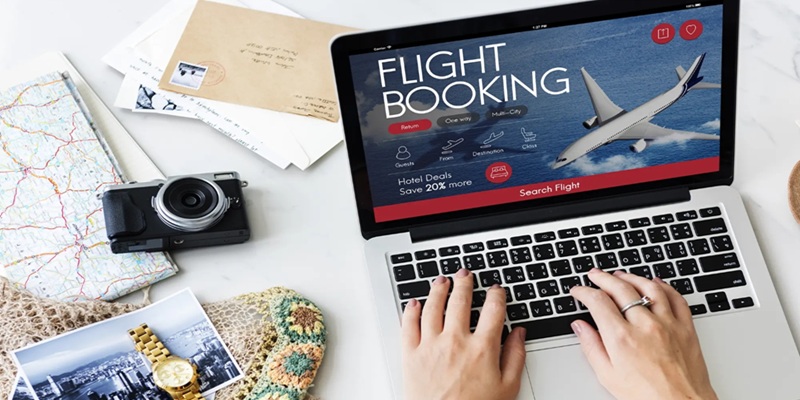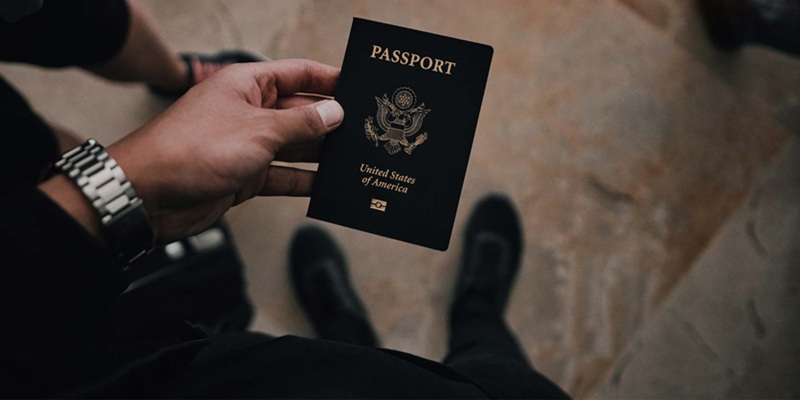Finance
Why the Right ISP is Crucial for Your Business in the Digital Era
1758089478000
Flying for the first time can bring excitement and anxiety. This guide offers essential travel tips for first-time flyers to help navigate airports and ease into the journey, making your air travel experience smoother and more enjoyable. Prepare to discover the skies with confidence!
Flying for the first time can bring excitement and anxiety. This guide offers essential travel tips for first-time flyers to help navigate airports and ease into the journey, making your air travel experience smoother and more enjoyable. Prepare to discover the skies with confidence!

Planning a trip can feel like navigating a labyrinth, especially for those flying for the first time. Here are crucial aspects to ensure a seamless start to your adventure:
When choosing a flight, prioritise timing, cost, and layover length. Early morning or late-night flights often cost less, but consider your comfort. Flying midweek can be more cost-effective than flying on weekends. While direct flights are convenient, layovers may save money—ensure layover duration and location don’t cause excessive waiting or fatigue.
After selecting flights, use travel apps like Google Flights, Skyscanner, or Kayak to compare prices and find the best deals. Set price alerts to catch fare drops and save money. Be cautious of change or cancellation fees, especially with low-cost airlines, and always read the fine print before booking to avoid surprises.
Packing efficiently for a flight can be daunting for new travellers; however, it is pivotal in ensuring a smooth airport experience and being adequately prepared throughout your journey.
Understanding airline carry-on rules is crucial for a smooth travel experience. Most airlines allow a bag that is approximately 22 x 14 x 9 inches, weighing 15–25 pounds. Pack essentials like travel documents, medications, electronics, a change of clothes, snacks, and a refillable water bottle. Avoid sharp or prohibited items to prevent security delays.
Checked luggage becomes indispensable when you need to transport larger items on extended trips. This option is generally preferred for vacations or lengthy stays where multiple outfits and equipment (like sports gear) might be necessary. However, be prepared for added fees, especially with budget airlines. A practical packing tip is to use compression bags to maximize space and efficiency. Finally, remember to keep essentials like toiletries, vital medications, and electronics in your carry-on rather than your checked luggage so these items are accessible when needed. Keeping these considerations top of mind will help you maintain a stress-free packing process.
Getting to the Airport is an essential task for first-time flyers. It's crucial to consider multiple transportation options while keeping in mind the importance of punctuality.
Taxis provide a straightforward but sometimes costly option, while rideshares like Uber and Lyft offer often cheaper, app-based pickups. Public transportation, such as buses or trains, is usually the most budget-friendly option, but it requires checking schedules due to potential route changes. Whatever the method, leave early and monitor traffic to avoid delays.
For first-time flyers, arriving at least two hours before domestic flights and three hours before international flights is vital for a stress-free travel experience. This allows time for check-in, security, and finding your gate, helping ease anxiety and handle unforeseen delays. Following these guidelines ensures a smooth start to your journey.
Navigating the Airport can be intimidating for newbies. Here's a simplified breakdown of the airport experience, divided into three primary facets: check-in, security checkpoints, and navigation.
For checking in, you have two primary methods: online or in-person check-in at the Airport. Opting for online check-in is often the preferred route, allowing travellers travellers to select seats, manage their baggage, and print boarding passes at their convenience. This approach not only saves time but also reduces anxiety upon arrival at the Airport. Conversely, in-person check-in can serve travellers who prefer face-to-face assistance or have complicated itineraries. To enhance your check-in experience, please arrive early, keep your identification and flight details readily available, and double-check baggage limitations to avoid any unwelcome surprises.
At security, you can expect to undergo screening to ensure safety regulations are upheld. Presenting your boarding pass and identification readily is necessary. Prepare for the process by wearing shoes that can be easily removed and ensuring personal items are within manageable bags. Familiarising yourself with prohibited items—such as liquids exceeding 3.4 ounces, sharp objects, and particular electronic devices—will help streamline your passage through security.
Post-security, effectively navigating the Airport is crucial. Keep an eye on terminal signs to locate gates, amenities, and emergency exits. Interactive maps or kiosks are available for assistance in finding your path. When checking your flight information display screens, verify gate numbers and updates continuously, and don't hesitate to reach out to airport staff for help if necessary. With these tools, first-time flyers can confidently and competently manoeuvre through their airport experience, setting the stage for an enjoyable journey.
Settling into your seat and observing in-flight etiquette can significantly enhance your flight experience.
To find your seat efficiently, wait for your row’s boarding call and match your boarding pass with overhead seat numbers. Store bulky bags overhead and smaller items under the seat ahead to keep aisles clear. Chewing gum or candy helps ease cabin pressure discomfort during takeoff and landing.
In-flight etiquette ensures a positive journey for all. Follow crew instructions on electronic devices, keep conversations quiet, and communicate politely when moving about. Keep your area clean when eating. Courtesy, like a friendly smile and considerate actions, makes your first flight pleasant for everyone.
Upon arrival, international travellers may find the immigration and customs processes overwhelming, but understanding these procedures can significantly ease the discomfort.

After landing, you will go through immigration control, where your passport and visas will be checked. Keep these documents ready for quick presentation. Customs rules vary by country; usually, you must declare items over duty-free limits, such as valuable gifts or certain foods. Research your destination’s regulations in advance to avoid any surprises.
After immigration, follow the signs to baggage claim and keep your receipt handy to identify your luggage. Stay alert to prevent mix-ups as your bags appear. Using luggage tags with contact info helps if your bag is lost. Finally, find transportation options, such as taxis or shuttles, at the exit to smoothly continue your journey.
For first-time flyers, key travel tips include thorough planning, arriving early, and staying patient throughout the airport process. Don’t hesitate to ask for help when you need it. Flying is more than reaching a destination—it’s a chance to explore new cultures and experiences. Keep an open heart and positive mindset for a journey full of adventure and discovery. Wishing you great travels!
car
1757926296000
Finance
1758253904000
Guides and Tips
1753438267000
Finance
1758253302000



